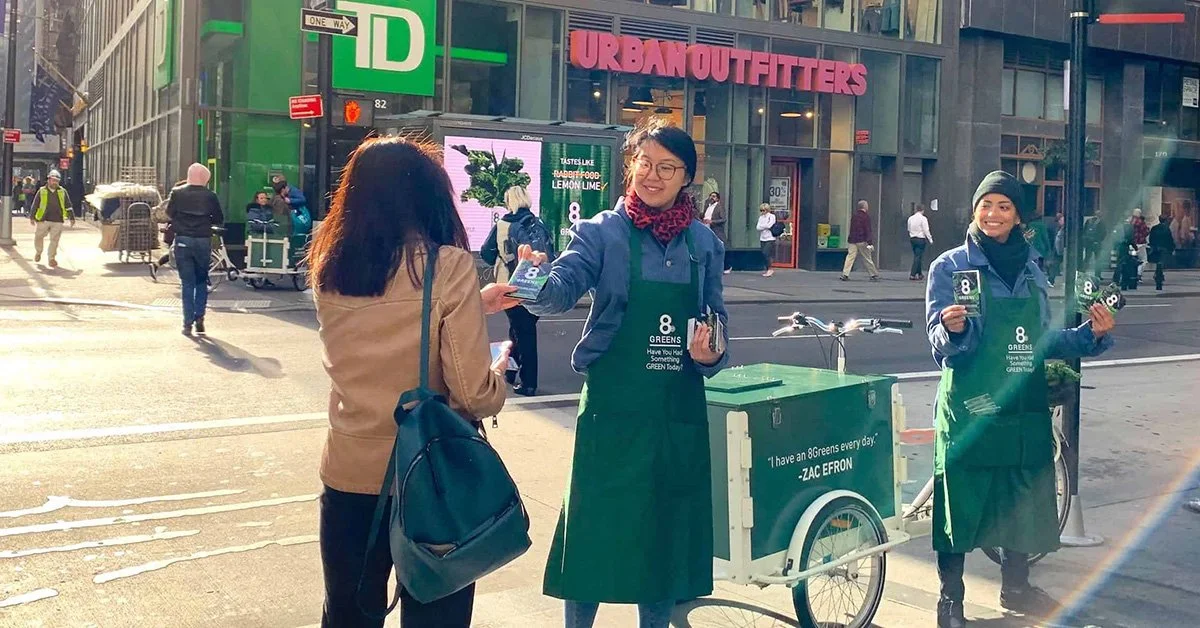Don’t Mistake It for Small: Measuring the Impact of Product Sampling in Experiential
Experiential marketing comes in many forms — from multi-sensory brand worlds to fast-moving field teams handing out samples. But while some experiences are built for immersion, others are designed to interrupt, surprise, and disappear again in moments. Product sampling sits at this end of the spectrum: it’s fleeting by nature, but its impact can be powerful and lasting — if we understand how to measure it properly.
Before we get into the measurement challenge, let’s define what we mean by sampling. At its simplest, it’s the act of putting a product directly into the hands of the target audience — whether that’s a chilled drink after the gym, a sachet in an online order, or a new snack handed out during the school run. It’s physical, direct, and (ideally) relevant. And it’s most often done to trigger trial, purchase, or consideration.
Despite its brevity, sampling is absolutely experiential. It’s a real-world, live interaction between a brand and an individual. And just because it’s short, doesn’t mean it lacks value or depth.
Time Spent ≠ Impact Delivered
There’s a persistent assumption in our industry that more time with a consumer means more value. But that’s not always true — and sampling proves it. You can deliver something meaningful in 20 seconds if it’s well targeted, well executed, and adds value in the moment.
We need to be careful not to conflate time spent with effectiveness. The quality of the interaction, and what the participant takes from it, is more important than duration. Sampling doesn’t trade in long dwell times — it trades in relevance, utility, and scale. We should measure it accordingly.
How Do You Measure Sampling?
Here are four principles for measuring experiences that are short, functional, and distributed:
1. Start with the Outcome, Not the Format
Sampling is rarely about deep emotional connection — it's about driving specific actions: trial, purchase, intent, or awareness. Measurement should track these outcomes directly, rather than attempt to retrofit more immersive experience metrics.
2. Rethink ‘Participant Value’
Sampling gives obvious value (“I got something for free”), but there’s potential for more:
The delight of unexpected generosity
A helpful recommendation from a brand ambassador
A chance to share or discover something socially
These are real, human layers of value — and our measurement should look to surface them, even in short-form formats.
3. Use Frictionless Feedback Tools
Long surveys won’t work. Quick polls, QR code ratings, or a single open question can generate insight at scale. Sampling lives in the moment — our tools need to as well.
4. Track in Aggregate and in Context
A single sample tells you little. But 100,000 samples — delivered in the right places, to the right audiences — can show trends, regional effects, and uplift in sales or intent. Sampling measurement is often about connecting dots across time and touchpoints
5. Accept a smaller ‘sample’
Due to its fleeting nature, the conversion of trials to surveys completed will inevitably be lower than events – with less controllable and engaged audiences – therefore acceptable sample sizes should be much lower.
A Small Experience Can Still Be a Valuable One
Sampling is often underestimated because of its speed. But if we judge its value based on outcome — not just engagement time — it earns its place firmly within the experiential toolkit.
It gives people something tangible, often exactly when they need it. And when it’s done with care, it can deliver real value: functional, emotional, even social. That’s an experience worth measuring.

